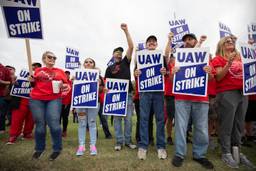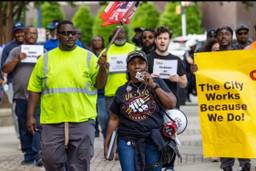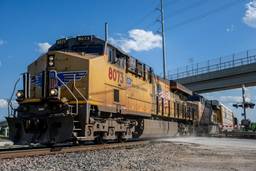With Massey Energy Execs Cutting Deals, Will the Don of Coal Country Finally Face Time?
Roger Bybee

Don Blankenship, the former Massey Energy CEO who gained wide notoriety for his relentless drive for profits at the expense of workers, has thus far remained unpunished for a major act of “industrial homicide,” as the United Mine Workers of America have described the April 5, 2010 explosion at the Massey-owned Upper Big Branch mine in Montcoal, W. Va. that killed 29 miners.
Blankenship was forced to step down after the disaster but walked away with a lavish “golden parachute” that included $2.7 million upon his retirement, another $10 million paid out in 2011, millions more in deferred compensation, a free house for life, health insurance coverage, a secretary and other perks.
Blankenship and other top Massey executives smugly refused to testify before federal and state committees investigating the disaster, perhaps believing that they could successfully stonewall investigators by practicing the Mafia-style code of silence known as “omerta.” Shielded also by the conservative deification of “job creators” like Blankenship and demonization of laws that protect workers’ lives as “excess regulations,” the Massey CEO — with the confidence of an old-time Sicilian mafioso — brazenly stated, “I pretty well think I know what happened and what the outcome will be, so I’m not concerned anymore about the investigation. I think it’s pretty much behind us.”
However, last Thursday’s conviction of Massey executive Gary May — who agreed to cooperate with authorities in exchange for his relatively light sentence — may cause Blankenship to become more concerned. The conviction could be the first step on a trail that leads directly to Blankenship.
May, a former Blankenship underling, was sentenced to 21 months in prison and a $20,000 fine for conspiracy. He admitted to ordering a company electrician to disable a methane monitor on a mining machine so it could continue to cut coal without automatic shutdowns. NPR reports that May “also pleaded guilty to deceiving federal mine safety inspectors and hiding safety violations.”
With the methane monitor shut off, the buildup of volatile methane fumes from coal dust eventually led to an explosion at Upper Big Branch so forceful that it traveled seven miles underground and killed the 29 workers.
But it’s unlikely that May was acting on his own when he shut down safety procedures. Don Blankenship was a “CEO whose micromanagement is well-documented,” as Vicki Smith reported for the Associated Press. “At Upper Big Branch, for example, Blankenship demanded production reports every 30 minutes.”
A higher-ranking former Massey executive, David Hughart, potentially facing heavy charges for his role in the proliferation of safety hazards in Massey mines, has also agreed to cooperate. Hughart’s testimony could be critical in finally holding Blankenship responsible, observed Phil Smith, communications director of the United Mine Workers of America, to Working In These Times. “The burden of proof is that [federal prosecutors] need to prove Blankenship’s direction and or knowledge of Massey’s efforts to evade the law. With Hughart, this is the first time that anyone has looked past the mine level and looked at the corporate level.”
Hughart’s testimony could be devastating to Blankenship. According to the AP:
Hughart is prepared to plead guilty to two conspiracy charges that carry the possibility of six years in prison. … Prosecutors say Hughart worked with unnamed co-conspirators to ensure miners at White Buck and other, unidentified Massey-owned operations received advance warning about surprise federal inspections many times between 2000 and March 2010. Those illegal warnings gave workers time to conceal life-threatening violations that could have led to citations, fines and costly shutdowns, authorities say.
Such efforts to evade state and federal safety regulations were pervasive at Massey. An official investigation for the state of West Virginia carried out by J. Davitt McAteer, former director of the federal Mine Health and Safety Administration, concluded that:
The disaster at Upper Big Branch was man-made and could have been prevented had Massey Energy followed basic, well-tested and historically proven safety procedures….Massey exhibited a corporate mentality that placed the drive to produce coal above worker safety.
The obsession with profits and production was exemplified by a Blankenship memo that exhorted workers to ignore time-consuming safety protections and instead focus on “running coal”: “This memo is necessary only because we seem not to understand that the coal pays the bills.”
This mentality, McAteer determined in his report, imposed what he termed “the normalization of deviance”:
Most objective observers would find it unacceptable for workers to slog through neck-deep water or be subjected to constant tinkering with the ventilation system – their very lifeline in an underground mine.
Practices such as these can only exist in a workplace where the deviant has become normal, and evidence suggests that a great number of deviant practices became normalized at the Upper Big Branch mine.
This perverse fixation on profits at the expense of human life led to a deplorable safety and environmental record for Massey Energy in general and the Upper Big Branch mine in particular, as the New York Times reported:
Federal records indicate that the Upper Big Branch mine has recorded an injury rate worse than the national average for similar operations for at least six of the past 10 years. The records also show that the mine had 458 violations in 2009, with a total of $897,325 in safety penalties assessed against it last year. It has paid $168,393 in safety penalties……
Such fines, designed to rein in Massey’s conduct, were the equivalent of mere parking tickets to the giant coal company. To keep his opponents at bay, Blankenship pursued a ruthless and relentless strategy to give Massey Coal absolute power in the workplace, the coal industry, and in regional politics. ”From the first day he could, Don began busting unions,” said United Mine Workers President Cecil Roberts. ”He was pretty effective at that, so now Don is trying to extend his reach across the state in politics.”
Blankenship’s influence in the region would be difficult to exaggerate. The New York Times reports that labor leaders credit him with reducing unionization among coal miners from 95 percent to less than 25 percent. In the same vein, environmentalists say he’s the key force behind the spread of the “mountaintop removal” mining technique, which leaves behind an utterly barren landscape and polluted streams. From the view of local Republicans, however, Blankenship is both a crafty, Karl Rove-like strategist and the most crucial financier of the West Virginia GOP.
Blankenship has thus wielded the power of a feudal baron over coal country. As the United Mineworkers’ Phil Smith put it, “He essentially ran southern West Virginia and eastern Kentucky.” U.S. Rep. Nick J. Rahall II, a Democrat whose West Virginia district includes a majority of Massey’s coal mines, described the Massey CEO’s influence in these terms: ”Don Blankenship would actually be less powerful if he were in elected office. He would be twice as accountable and half as feared.”
But now Blankenship now confronts the possibility that the testimony of his former yes-men Gary May and Hughart could produce a cave-in of his luxurious retirement.
While the federal prosecutor Booth Goodwin has been skillfully and patiently building his case against Blankenship, however, recent federal handling of corporate wrongdoers reinforces the notion that they face a different standard of justice exists than do the inner-city kids engaging in $50 or $100 drug deals who make up a substantial chunk of the U.S. prison population of 2.2 million.
In the case of the 29 Upper Big Branch deaths, Massey Energy, which was purchased in 2011 by Alpha Natural Resources for $8.5 billion, Massey paid out $10.9 million in fines to the Mine Safety and Health Administration — a very modest cost relative to Massey’s purchase price. But that pales in comparison to a 2008 deal that Massey got from the attorney general. As Sourcewatch reported:
Then-U.S. Attorney Charles Miller settled civil and criminal matters concerning the January 2006 Aracoma Alma Mine accident by including an unusual promise not to prosecute any officers or employees of the Massey parent company.
“Too big to fail” served as a pretext, first under George W. Bush and then under Barack Obama, for bailing out Wall Street banks while providing no immediate aid to desperate homeowners. That rationale has now morphed into “too big to jail,” with federal prosecutors wringing their hands over the prospect that punishing executives would result in unacceptable “collateral consequences” costing tens of thousands of jobs — as if these criminal executives were irreplaceable. So despite all the damning evidence against Don Blankenship, this pervasive reluctance of the Justice Department under Attorney General Eric Holder to fully punish the powerful means that perhaps, after all, the don of Appalachia truly doesn’t have that much to worry about.

I hope you found this article important. Before you leave, I want to ask you to consider supporting our work with a donation. In These Times needs readers like you to help sustain our mission. We don’t depend on—or want—corporate advertising or deep-pocketed billionaires to fund our journalism. We’re supported by you, the reader, so we can focus on covering the issues that matter most to the progressive movement without fear or compromise.
Our work isn’t hidden behind a paywall because of people like you who support our journalism. We want to keep it that way. If you value the work we do and the movements we cover, please consider donating to In These Times.







